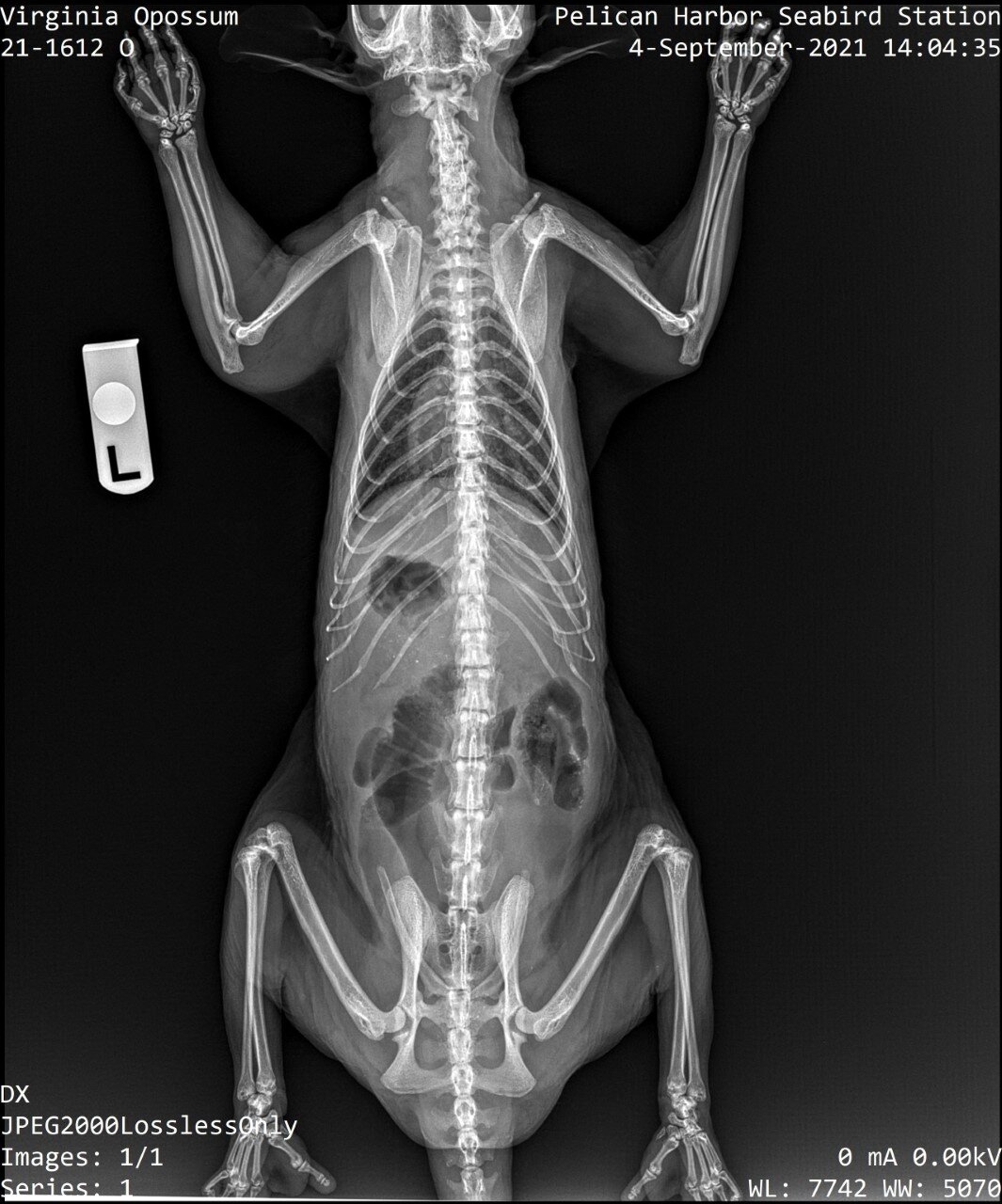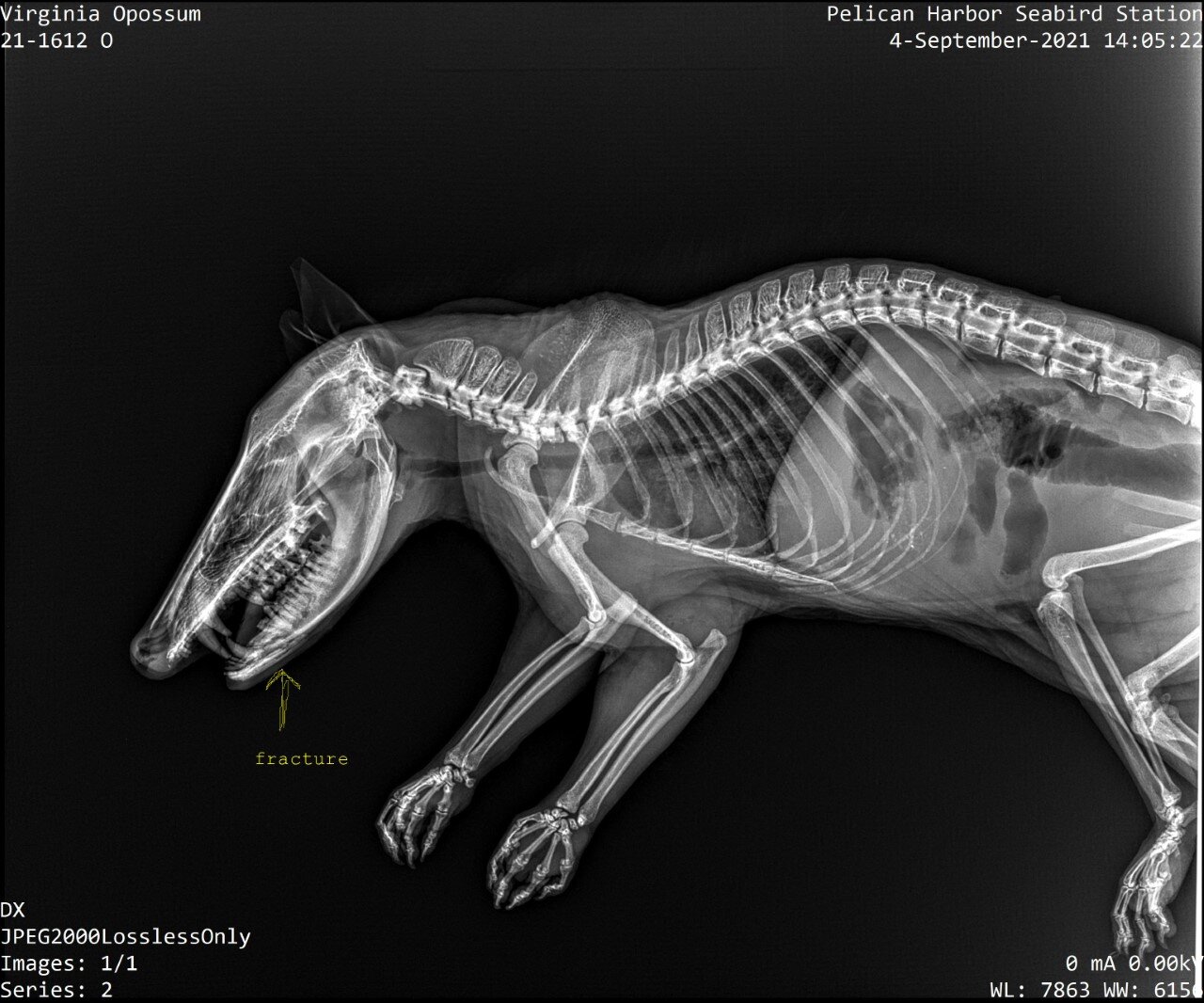Written by: Kaisha Chaves Solomon, PHSS intern, and Operation Rescue and Release volunteer
The morning of September 4th, Operation Rescue and Release notified the group chat of an injured Virginia opossum located in coral gables. I was scheduled for my internship that day; therefore, I informed Pelican Harbor Seabird Station I'd be available to perform the rescue and transport it to the station. On arrival, I contacted the good samaritan that reported the injured Opossum, patient 1612. As she guided me to the backyard, she explained she found patient 1612 hanging by its arm caught in the crack of a wooden fence. How long the opossum found itself dangling from the wall is unknown. The finder and her husband freed the Virginia opossum from the barricade, but it was evident damage was done on the front left arm. Patient 1612 was kept in the corner of the fence and offered a mixture of fruits, yogurt, and egg until help arrived; although this was a healthy diet, providing food to an injured animal before the rescue isn't recommended. Onsite, patient 1612 seemed very stressed, so I used a towel to cover its head and proper gloves to carefully transport it into a box I had prepared with a towel inside. From there on, it was a quiet ride to the station.
When arriving at the clinic, Yaritza, one of pelican harbor seabird station's most talented and highly experienced wildlife rehabilitators, performed an intake exam on patient 1612. She concluded an x-ray was necessary to determine whether a fracture was present in the left front arm. I assisted with placing patient 1612, a now confirmed adult female, into a box to be weighed on the scale. She had a total weight of 2,545 grams, and staff indicated that I pull 90cc of subcutaneous fluids that would be given to her via subcutaneous fluid administration, an injection directly under the skin. The patient was placed under anesthesia to get a complete x-ray of her body. There was no indication of a fracture in her left arm; however, Yaritza discovered a fracture in the lower jaw on the left side. I transferred patient1612 from the x-ray table to the exam table. I assisted Yaritza by holding patient 1612's head and mouth open while she flushed and cleansed the bone exposure. Yaritza thought quickly on her feet and proceeded to sow three stitches in the lower jaw as a temporary solution to hold everything in place. Patient 1612 was given the following medications via intramuscular injection: Meloxicam, an anti-inflammatory drug; Buprenorphine, a pain reliever; Ivermectin, a medicine used to treat parasites; and finally, Excede, an antibiotic. Patient 1612 also received laser therapy for her swollen left arm to help reduce the inflammation and minimize the pain.
Dr. Schneider performed surgery a few days after intake to remove the underlying infectious tissue from the wound on her front arm. The wound was so infected that we treated it as an open wound. We would clean the wound daily and replace the bandage with a new wet to dry bandage. Wet to dry bandages are used with infected wounds to draw out the infection. Along with daily bandage changes we would also cleanse the fracture site of the jaw to prevent infection. She also received laser therapy on both the rostral mandibular fracture and left front arm. Unfortunately, as the days went by, patient 1612 refused to eat overnight, causing her to lose weight drastically. There was significant tissue and nerve damage on the left front arm; therefore, staff concluded the front left limb would never function again. Patient 1612 would not be suitable for release with amputation. Therefore, euthanization was the most humane outcome for the patient.
In conclusion, homeowners must keep in mind our furry and nocturnal neighbors and be up to date with the maintenance of their property. You never know whose life you may be saving with a simple fence repair.





